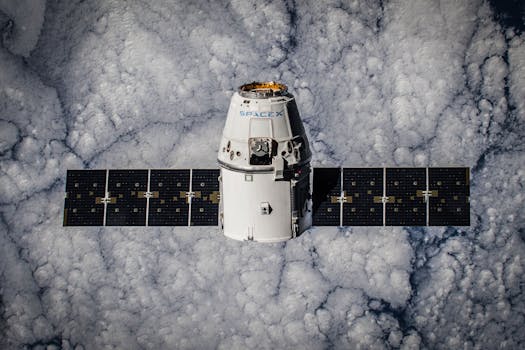The Future of Satellites: Exploring the Latest Advancements and Innovations in Space Technology

The Future of Satellites: Exploring the Latest Advancements and Innovations in Space Technology
The future of satellites is rapidly evolving, with advancements in technology and innovations in space exploration. The use of satellites has become an essential part of modern life, from navigation and communication to weather forecasting and earth observation. In this article, we will explore the latest developments in satellite technology and what the future holds for this industry.
Advancements in Satellite Communications
Satellite communications have revolutionized the way we communicate, providing global coverage and connectivity. The latest advancements in satellite communications include the development of high-throughput satellites, which offer faster data speeds and greater capacity. These satellites use advanced technologies such as Ka-band and Q/V-band frequencies to provide higher bandwidth and greater efficiency. Additionally, the use of satellite constellations, such as those developed by companies like SpaceX and OneWeb, is becoming increasingly popular, providing global coverage and low-latency communications.
Satellite Imaging and Earth Observation
Satellite imaging and earth observation are critical applications of satellite technology, providing valuable insights into our planet’s climate, weather patterns, and natural resources. The latest advancements in satellite imaging include the development of high-resolution optical and radar sensors, which provide detailed images of the earth’s surface. These images are used in a variety of applications, including weather forecasting, crop monitoring, and disaster response. Furthermore, the use of satellite constellations is enabling the creation of high-resolution, high-frequency images of the earth, providing unprecedented insights into our planet’s dynamics.
Innovations in Space Technology
The future of satellites is not just about advancements in communications and imaging, but also about innovations in space technology. One of the most significant developments in recent years is the reusable rocket, which has significantly reduced the cost of access to space. Companies like SpaceX and Blue Origin are leading the charge in this area, developing reusable rockets that can launch payloads into space and return to earth intact. Additionally, the development of new propulsion systems, such as ion engines and Hall effect thrusters, is enabling satellites to travel farther and faster, expanding our reach into the solar system.
Conclusion
In conclusion, the future of satellites is exciting and rapidly evolving. With advancements in technology and innovations in space exploration, we can expect to see significant improvements in satellite communications, imaging, and space technology. As the use of satellites becomes increasingly important in our daily lives, it is essential to continue investing in research and development to push the boundaries of what is possible. Whether it’s enabling global connectivity, monitoring the earth’s climate, or exploring the solar system, the future of satellites is bright, and we can’t wait to see what’s next.






